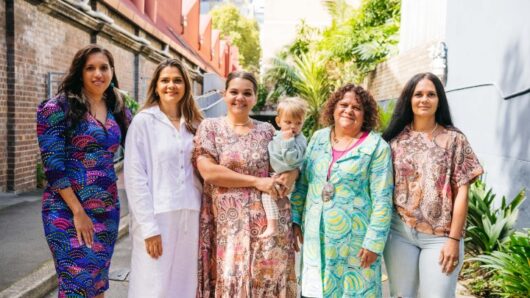 Pumpkin Patch’s failure to differentiate itself from direct competitors and international heavyweights’ expanded childrenswear offerings could deter potential suitors from a takeover bid.
Pumpkin Patch’s failure to differentiate itself from direct competitors and international heavyweights’ expanded childrenswear offerings could deter potential suitors from a takeover bid.
Late last week, the childrenswear retailer’s shares were placed in a trading halt following the declaration that there was no value left in its equity after discussions with its bank were unsuccessful.
“The business remains significantly over-leveraged and capital constrained,” the company said in a statement.
“Our ability to move forward from here is impacted by the lack of available capital for debt reduction and reinvestment. This represents a material risk to the ongoing viability of the business.”
This morning, the retailer announced it has appointed Andrew Grenfell and Conor McElhinney of McGrathNicol as administrators for Pumpkin Patch and a number of its subsidiaries.
Neale Jackson and Brendon Gibson of KordaMentha have been appointed as receivers by the retailers bank.
“It is with considerable regret that the Board of Pumpkin Patch Limited has placed the company into Voluntary Administration under Part 15A of the Companies Act 1993,” said Peter Schuyt, chairman and Luke Bunt, MD in a statement to the NZX.
In its full-year results published last month, the Auckland-based company told investors that its directors had given an undertaking to the bank that it would put forward proposals by October 20, although this has been pushed out to October 31.
Pumpkin Patch’s debt to ANZ Bank rose to $46 million from $39.1 million in the year to the end of July 2016. It posted a loss of $15.5 million in the same period.
It said its efforts to restructure itself, coupled with its discussions with the bank and certain key stakeholders, has generated substantial uncertainty, which remains ongoing.
“Shareholders should note that it is highly unlikely that there is any residual value in the company’s equity,” the company said.
Bunt said a number of factors had caused the decline in sales and earnings, including store closures and currency effects, but, he said, the main factor was a decline in the international wholesale business and related hemisphere online channels, which, according to him, were important profit contributors previously.
Speaking to Inside Retail Weekly, Greg Harford, general manager, public affairs, of industry association Retail NZ said Kiwi fashion retailers operate in an extraordinarily competitive market – and that’s also true for those specialising in children’s clothes.
“New Zealanders are increasingly shopping online from abroad, taking advantage of the current tax loophole that means low value items can be sold into New Zealand free of tax and duty.”
The children’s clothing chain had previously confirmed it would close 20 more stores and affirmed guidance for weaker earnings in the current financial year in the midst of a strategy to restore earnings growth over the next three years.
The company closed 10 stores during its last financial year, including one in Ireland, bringing its total number of outlets to 176.
Pumpkin Patch failed to find a suitor with an acceptable proposal after hiring Goldman Sachs for a capital review in 2014. At the time, it warned it was at risk of breaching banking covenants.
The retailer also said in the face of closing stores, it would “reposition” its network to the current average store size of 245sqm, although that “can only be executed within the limits of our financial capacity and will therefore take some time to achieve,” said Bunt.
One explanation for the dramatic fall from grace of the embattled retailer is the rise of international fashion chains harnessing a stronger focus on their childrenswear offerings, with Harford asserting New Zealanders have been keen to explore new international brands entering the market.
“New brands such as Cotton On Kids present real challenges for homegrown brands,” he said.
Cotton On Kids opened its largest flagship store globally at New Zealand shopping centre Sylvia Park earlier this month, in line with a new store concept rollout. The retailer said the new store, which is 432sqm in size, features the breadth of the fashion chain’s childrenswear offering.
As the fortunes of Pumpkin Patch continually decline, Cotton On is conversely approaching its 25th year of business.
The Sylvia Park Cotton On Kids store, the first store in New Zealand to offer the brand’s full product assortment, has girls’ and boys’ apparel, baby apparel, sleepwear, bedroom linen and accessories. Over the past 11 years, Cotton On kids has grown to 178 stores across nine international markets.
Marshal McLean, group executive of communications, for Cotton On said after identifying a gap in the market for on-trend and affordable childrenswear, the global chain’s business approach to launching a childrenswear brand was straightforward.
“At the time we were still a relatively small business with around 35 people which is hard to believe when today we have a team of 22,000. I firmly believe it’s a result of our ability to sense what the customer wants and deliver it quickly – that’s what has enabled us to grow,” he said.
Access exclusive analysis, locked news and reports with Inside Retail Weekly. Subscribe today and get our premium print publication delivered to your door every week.





